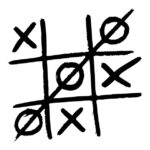
Lesson 5 Functions
Functions are chunks of code that tell Python to do something. They are one way to reuse code – you can use the functions in your programs again and again.
Functions help to make your program more efficient, easier to debug (fix errors) and modify.
Parts of a Function Scope
A function has three parts: Name, Parameters, and a Body
Examples
def testfunc(myname)
print(‘hello %s’ % myname)
The name of this function is testfunc. It has a single parameter, myname, and its body is the block of code immediately following the line beginning with def (short for define). A parameter is a variable that exists only while a function is being used. You can run a function by calling its name, using parentheses around the parameter value:
Input:
testfunc('Juan')
Output:
hello Juan
The function can take two, three, or any number of parameters, instead of just one. The two values for these parameters are separated by a comma:
Input:
def testfunc(fname, lname):
print('Hello %s %s' % (fname, lname))
testfunc('Mia', 'Lee')
Output:
Hello Mia Lee
You could also create some variables first and then call the function with them:
Input:
firstname = 'Joe'
lastname = 'Smith'
testfunc(firstname, lastname)
Output:
Hello Joe Smith
A function is often used to return a value using a return statement. For example, you could write a function to calculate how much money you were saving:
def savings(pocket_money, paper_route, spending):
return pocket_money + paper_route – spending
This function takes three parameters. It adds the first two (pocket_money and paper_route) and subtracts the last (spending). The result is returned and can be assigned to a variable, balance, which can then be printed.
Input:
balance = savings(10, 10, 5)
print(balance)
Output:
15
Variables and Scope
A variable that is inside the body of a function can’t be used again when the function has finished running because it exists only inside the function. In the world of programming, this is called scope.
Examples
Input:
def variable_test():
first_variable = 10
second_variable = 20
return first_variable * second_variable
print(variable_test())
Output:
200
If we call this function using print, we get the result: 200. However, if we try to print the contents of first_variable or second_variable outsie of the block of the function, we get an error message:
Input:
print(first_variable)
Output:
Traceback (most recent call last):
File “<pyshell#50>”, line 1, in <module>
print(first_variable)
NameError: name ‘first_variable’ is not defined
If a variable is defined outside the function, it has a different scope. For example, let’s define a variable before we create our function and then try using it inside the function:
Input:
another variable = 100
def variable_test2():
first_variable = 10
second_variable = 20
return first_variable * second_variable * another_variable
print(variable_test2())
Output:
20000
In this code, even though the variables first_variable and second_variable can’t be used outside the function, the variable, another_variable (which was created outside the function) can be used inside it.
Practice Questions
1. Write a program that calls a function num() which will output the numbers from 1 to 20.
Expected Output:
1
2
3
4
5
6
…
2. Write a program to input two numbers. The program will then call a function, max_num, and pass the two numbers to the function. The function will compare the two numbers and return the larger of the two numbers.
Expected Output:
Input: 5 and 7
7
3. Write a program that calls a function sum_average(). The function, sum_average will input three numbers from the user and return the sum and average of the three numbers.
Expected Output:
Input: 5, 10, and 12
27
3
4. Write a program to output a student’s grade based on their score. The student can score anywhere from 0 to 100. The program will input the score and call a function, grade(), to calculate and output the grade. The grade is determined based on the following table:
Expected Output:
Input: 86
B
- A: 90-100%
- B: 80-89%
- C: 70-79%
- D: 60-69%
- F: below 60%

Python Games
These are some games created using the help of loops. The files are provided in text format. You will need to copy the code in the file into the Thonny editor in order to run the program.
